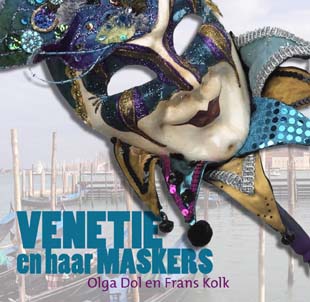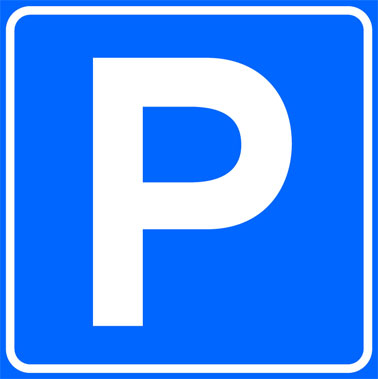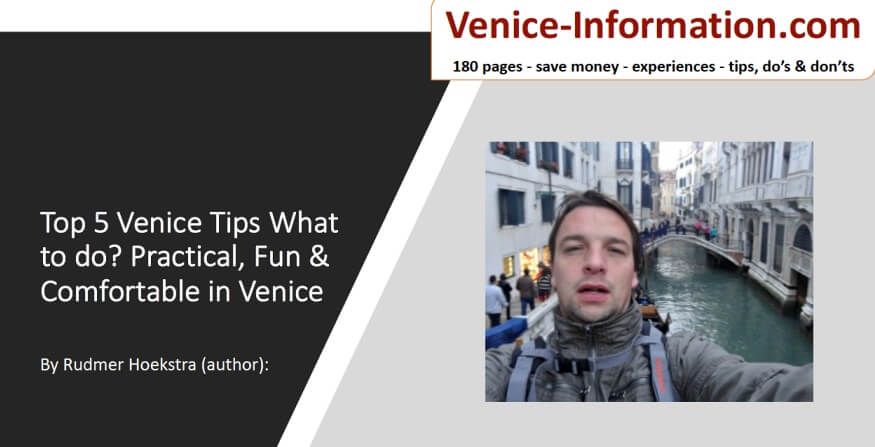- Home
- Venice Masks
What Hides Behind Venice Masks?
Venice Masks is a work of art with a story. That is why I will tell you everything about the origins of traditional masks.
In this article I'll tell you everything you need to know about Venice masks.
CONTENT:
- Curious about the history of the Venetian mask?
- In those days, the masks of Venice were still simple
- Influence on the Masks in Venice
- But then. The Masks in Venice were banned
- You might like these
Did you know that Venice masks are also widely used in the UK, USA, and all western countries? Often during events or as a work of art on the wall.
No worries. You can buy a traditional mask via my friend's website. You don't have to go to Venice to understand its history.
For sales, lectures, and making the masks yourself, you can contact Olga Dol. Buy her book, Venice and its Masks
There is nothing better than to read about the own "Venice experiences" of this writer and artist.
1. Curious about the history of the Venice masks?
Venice Inside recommendations:
Traditional Islands Boat Tour | Premium Skip-The-Line Entrance | Classic Gondola Ride
First, about the Carnival. This is important to understand the true origins of Venice Masks. Carne (Italian for "meat"). Vale (Italian for "renounce").
Before people started fasting, there was a time of joy. Around the 15th century, the carnival period lasted from Christmas to Lent. During that period, the Venetians wore masks.
Anyone can hide behind a Venetian mask. Read more about the secrets of the Venetian Mask. Rich and poor intertwined in this way, both men and women. Women dressed up as men, and men could pretend to be women.
Dance, music, drink, and mystery were the ultimate moment of enjoyment for the Venetians. The protection of the masks allowed them to flee from the Catholic Church of Rome's strict morals.
Due to the masks, the Venetians, rich and poor, mingled in the ever-flaring festivities. And the nuns from the monasteries also went out masked to surrender to the beautiful things in life.
2. In those days, the masks of Venice were still simple
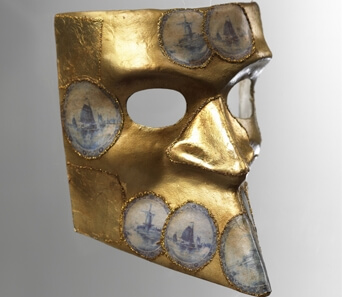 A Bauta mask with Dutch decoration
A Bauta mask with Dutch decorationFor the men, for example, the "bauta outfit." This was a white mask with a longitudinal fold protruding well above the mouth.
One spooky fact is that it distorted the voice, and they wore a black capes and a three-pointed hat. The uncovered parts were covered with lace.
The women who wanted to show a little more of their beauty wore small expressionless masks that only covered the face. These masks were not tied around the head but held with the teeth.
A button was tied on the inside of the mask for this purpose. The ladies could therefore flirt but not speak. That gave an extra mysterious dimension to wearing a mask in Venice. Read more where you Buy Venetian Masks.
Wearing masks in Venice was very pleasant at the time. In the trading city, it was possible to gamble quietly and practice all forms of sexuality without being recognized. So, gradually, the mask was worn more and more. After that, it was only taken off on official occasions and holidays.
It was all tolerated by the Church of Rome as if they were wearing a mask themselves. The extravagant behavior of the Venetians with their masks was only tolerated because Venice was so rich. The trading city transferred large sums of money to the Catholic Church and apparently bought off its sin.
3. Influence on the Masks in Venice
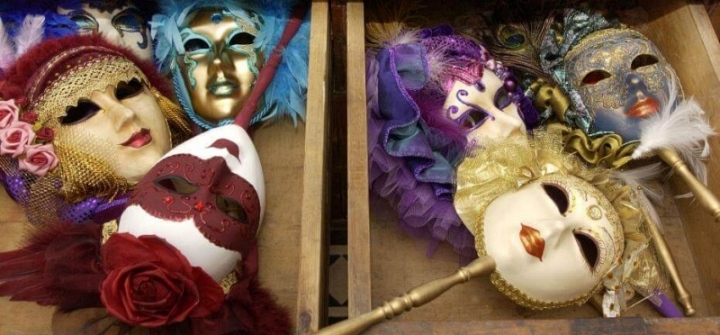
The carnival was a feast that attracted a lot of tourism throughout the city. Some entertainers played pranks, and jugglers showed their skills. These entertainers often traveled as a group to give performances together. This is where the well-known Commedia del 'Arte began. It has influenced the Venetian carnival but also the masks of Venice.
At one point, the Venetians used the masks almost all year round. But, because no one was recognizable, moral morality became increasingly looser in the city.
Venice was teeming with women supported by men but did not marry. Instead, a woman had two or three lovers, especially the nuns.
At that time, it was hardly surprising that many children were born within the monastery walls. However, occasionally things got out of hand; the authorities intervened and, for a period, banned the wearing of masks in Venice.
The Venetians didn't care much about it. But, in the 17th century, the middle class also grew richer. As a result, they too could throw themselves into the party with sumptuous clothing and beautifully decorated Venice masks.
During the carnival, everyone walked around masked. You were not recognized by anyone. All the excesses you can imagine took place. Behind the mask, everyone was equal; social classes did not exist. You were not recognized either. So people could gamble, drink, slog, sing, dance, and cheat.
4. But then. The Masks in Venice were banned
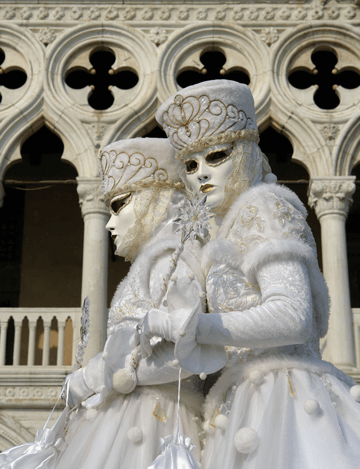
The Venice mask began their retreat. Venice lost power and wealth after the Turks recaptured many of the ports and cities of the Byzantine trade routes. Besides, the way to Asia by sea was increasingly in use. The decline of the Republic of Venice had begun.
Then, in the mid-18th century, the Pope felt that the time had finally arrived to stop the Venetians' misconduct. So he banned wearing masks in Venice.
When the Austrians gained control of the city through a treaty with Napoleon in January 1798, the Venetian masquerade finally ended.
It was not until 1959 that wearing Venice masks were allowed and restored. The underlying idea was to give the city more tourism and a financial boost. The Carnival in Venice is world-famous now. Venice masks are for sale all over Venice. They are often made in backstreets by craftsmen.
You've read about the Venice Masks. There is plenty to explore as you see. Discover Venice on my site and get more information about this beautiful Italian city.
- Home
- Venice Masks
- Secrets behind Venice Carnival Mask
- Many types of Venetian Masks and material
- Where to buy Venetian Masks?
Start looking for a cheap place to sleep in Venice
